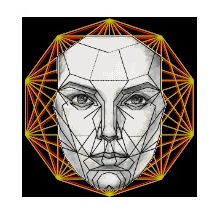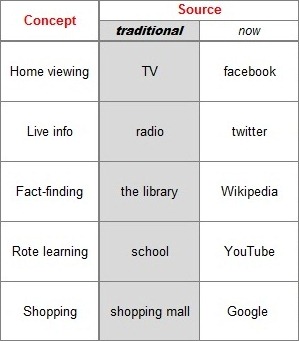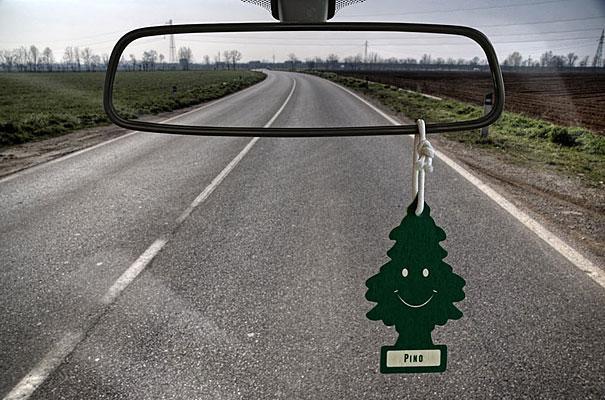The top 7 medal-winning countries at the 2012 Olympics were also the top 7 military-spending countries of 2012 … in the exact same order. Why is this so?
This article moves towards the answer.
Also for reference, as mentioned in a previous post:
[ …(humanity’s) identity-based tendency towards in-group self-determination is expressed in people’s shopping, spending and investment attitudes and behaviours as well, and it won’t be diminishing any time soon so ignore it at your peril, for it won’t be long until being out-of-touch will mean seriously out-of-pocket.
A new “semi-soft collective warrior” is emerging (interestingly something which Karl Marx identified and foresaw conceptually) which will prevent the return of the warrior movements that we saw in the 1930s. We are seeing, and will continue to see, a much needed ‘blurring of the lines’ between “merchant”, “sage/creative” and “worker” types in our global society.
This is a critical power shift to a new ruling collective sporting a hybrid identity that will effectively stave off the return of conventional world war and other childish group tantrums.
Admittedly we currently have a skewed earnings graph with more billionaires getting richer than ever while the rest merge closer to the mean, but in time those billionaires will not be calling the shots in the way that they are today, nor will they be the only ones accruing significant wealth.
First in this article, it’s suggested that the secrets of nature hold the key to understanding and creating more reliable human systems.
Secondly some examples of successful modernised systems of value capture will be given the label “neo-economy” …
The better our understanding of both sides of the brain, the better our understanding of behaviour, and the better and more stable our systems will become.
It’ll be interesting to see which we succeed at first, the unlocking of the unfathomable complexity of our creative thinking process, or the development of artificial intelligence at least equal to our own analytical capabilities.
Indeed to a great extent the two are interdependently intertwined.
Laying claim to a complete understanding of the creative thinking process would in some way require the successful achievement of the complete unlocking of our analytical side.
When seeking out answers to complex “economic” patterns, simply ignoring the majority of one side of our extraordinarily complex mental set and the associated thoughts, experience and behaviours is surely akin to absolute madness.
Simply put, there’s no escaping the reality that we have to unlock a comprehensive understanding of the right side of our collective brain before we can hope to build systems of sustained optimal function.
We can be (or think we’re being) as technically correct as we like, however the key lies in the chaos, irrationality and emotionality of the right hemisphere of our grey matter.
Understanding the word “data”
It’s an understatement to say that we need to refine our understanding of concepts such as ‘data’, ‘value’, and ‘economy’.
It’s becoming apparent that the word ‘data’ needs to be clarified, perhaps even redefined for many of us.
Data is the lowest level of abstraction from which information and then knowledge are derived. It is information from which meaning can be inferred.
– One example, a creative thinker processes stimuli (data) from the life experience and memories (data) in combination with a defined problem to which creative ideation (data processing) is applied from which an emotional (also data rich!) solution is developed.
– Another example would be how electronic/digital software analyses and infers meaning (new data) from numbers (data) within a plastic or ‘artificial’ computer (data processor).
It can be easily argued that there is as much data involved in the creative thinking process as there is in the “analytical”.
Why does the system of “economics” continue to fail us?
As you would expect, being bound and ruled by a construct such as “economy” leads many of us –merely through reinforcers such as money, reward, possessions, wealth, safety, reproductive fitness etc – to be quite biased towards the highly concrete and overtly predictable left-brain, or ‘non-creative’, decision-making and design apparatuses. As you would expect, because for most of us, it’s all we know.
Thus, we continue to replicate the traditional model in our large scale efforts, due to young people not being allowed to control system design, implementation, and management, and to the continuance of “concrete-operational” money models.
The continued success of dinosaur banking is also due to banks enjoying the collection of banking fees from uninformed (or semi-informed) consumers, plus the vast non-bank networks being reinforced by such revenues, and the way in which delay and dam-walling reinforces itself to continue an outdated, unnecessarily volatile ecosystem.
Instability that results from the ignorance of nature and real-time response and reiteration is the no longer the best form of chaos. Keeping technological advances back from people so that they incur fees and are not entirely on top of their financial situation from minute-to-minute is certainly not the way forward, because people will usher in their own solutions and control of them will be lost.
In any case, the main focus of this article is that a purely ‘rationality-centred’ two-dimensional process of “economy and consumer” is in itself irrational.
We cannot deny that as a whole, humanity and the system within which it is immersed is inherently unstable, disorganised and ‘unfixed’, and is actually at its most productive when allowed to be so. Concepts such as BitCoin are surely the safer way to go, given the way in which consciousness and decision-making is evolving.
There is chaotic instability in everything about our universe and thus human kind, and it can be seen in everything we do and create. This by-product of our universe rears its head as supposedly ‘unavoidable peaks and troughs’ in our financial system. It’s also in our social dynamics in everything from our courtship, to our traffic flow patterns, to our internal psychological terror management systems hard-wired into our brains, the list is lengthy and undeniable.
You can get half a dozen of the best Formula One pilots to drive around a roundabout at 10 kilometres per hour with the utmost of precision, but sooner or later you will encounter what’s known as a ‘phantom traffic jam’. For some reason it is unavoidable that the flow of traffic will simply break down at some point.
Equally, you can attempt to manufacture conformist harmony, consistency and predictability into almost all present-day large-scale vertically-structured human systems, but you will eventually encounter a build-up or ‘perfect storm’ of instability, a critical mass is reached and a shock-wave hits. Seemingly unavoidable disasters are encountered time and time again.
Points of ‘critical mass’ and ‘systemic breakdown’ or ‘disasters’ in human systems are brought about by the ignorance of natural variables that cause micro-instabilities, which then add up and become exponential.
In top-down ‘synthetic’ systems, be they economic or otherwise, most of nature’s healthy instabilities get stifled. Nature is unable to ‘do its work’, so the latent instability amasses to the point of ‘boil over’ of gestalt or eclectic instability in its attempt to restore the minimal harmonious function the system requires.
What’s been realised in recent times is that we can’t have harmony without the ongoing release of natures ‘creative destruction’. And we are wasting time and money trying to “control” destruction on our own.
If we run non-natural ‘top-down’ systems, we are not working to parry natural forces and creative destruction to our advantage. We fall victim to faulty decision-making errors, ie we allow all the bad elements of irrational behaviour to occur and go unchecked and we enjoy virtually none of its good elements.
Traditional economic models are at best a set of worthwhile experiments showing us our faults and thus how we should not operate. Or, as we see in current research efforts globally, how we need to understand the past fully so we can devise how we can and will operate in a new future.
Whether it be a human child’s tantrum, a destructive weather front, a colliding meteorite, or a maladaptive financial system, the foundation or ‘default’ way in which our universe works and restores harmony is governed by the laws of nature – and it becomes worse if we attempt to superficially harness it, ‘strap it down or stifle it in any way.
It is true that we are nature however it is also true that we unnecessarily render ourselves as victims to natural forces if we don’t obey them.
Really we should be utilising natural forces to drive us forward at a maximised efficiency, together with randomness, failure, recovery and a touch of chaos factored in to occur within and across our systems at all times.
Such laws of nature are now being observed and obeyed by some modern companies such as social media platforms and technology companies, and we are seeing the creation of a new type of value distribution system. The neo-economy has arrived.
A neo-economy brings rationality where required, identifies and facilitates the removal of the more pernicious or bad irrationality, whilst at the same time allows for the pervasion of nature-based good irrationality.
In attempting to bring increased meaning, permanence, order and harmony to any human-made system, we are discovering that it’s best to design in randomness, allow for instances of chaos, and operate on constantly iterative tendencies – the same tenets around which our very ether operates.
We’re also discovering that when we interfere with nature unnecessarily, that nature itself begins to break down and we suffer.
Understanding the data of nature’s system and its inherent patterns is the only way to stop the build-up of inaccuracies, reduce misalignment, and prevent collapse or irrelevance in the systems we build ourselves.
Birds of flight are a great example of a species that has developed a system which harnesses the forces of nature. Having all their individual members capable of leaving the ground for extended periods enhances their survival and successful operation in and around the way nature can make things dangerously difficult on the ground.
Many a great expert in a number of different fields have emphasised that intelligence is NOT the best asset for long-term survival. Adaptation is much more akin to intelligence per se.
Not only is adaptation important but iteration is important because iteration is the path to idealised adaptation, which is what is being discussed here.
The modern human iteration process however, is not the lengthy process of conventional evolution, such as birds of flight. It is a faster and much more pro-active type of evolution, a process I like to call “evolition”.
The difficulty is, when you are attempting to iterate a system to a level of maximum harmony in a short period of time, you need to be able to test it and re-test it, and re-test it, and re-test it the same number of times that birds were able to test their system of flight over however many bazillion years, so you need to be able to reiterate very quickly.
Only now are we capable of such hasty iteration, so it would seem that we are indeed ready to build some naturally effective systems of value capture/harvest for our own long-term good.
The cardinal rule we can be oh so sure of is that nature and natural forces such as real-time harmonious distribution of things like resources, consequences and reward all need to be respected, and sometimes even blindly obeyed.
Out-dated traditional “economics” is like a traffic cop with the flu fumbling around at a crowded intersection on a Monday morning looking for his glases. Whereas “neo-economics” (e.g. YouTube, Insta, proper crypto etc) is like a self-sufficient roundabout with speed bumps, an agreed limit of 10km/h, and has Formula One cars coming and going smoothly, seemingly all on their own.
In seeking to tame, harness the full potential of, or bring predictability to any human system or environment we need to embrace a nature-centred approach, such as the likes YouTube is now doing, and facebook and Instagram are finally cottoning on to.
What we don’t need any more are partial, superficially structured systems of economy designed to try and domineer, stifle or deny the contribution of individual members in a way that eventually leads to the collapse of the system itself and the loss of those people’s money.
Much better is the approach that allows for and rewards any and all contributions, and embraces the required randomness within, and the creative destruction (and thus auto-reiteration) of, the system itself on an ongoing basis.
The idea of randomness and creative destruction sounds a bit scary, but nowhere near as scary as the build up of imbalance that can only be released by economic collapse or all-out warfare, crisis or disaster.
Creative destruction, natural justice and constant refit should be part of every human system to ensure stability and apt prosperity, whether it be something small like a social club at work or a local farmer’s market, or something larger such as a federal trade agreement or a global protocol for smart contract management.
What we’re now seeing (as better systems begin to arrive on the scene) is that individuals do indeed contribute to the advantageous iteration and healthy evolution of a system when they are placed at the centre and given the power of influence. Actual influence.
Moreover, what results is the forging of a more robust and inherently ‘in-sync’ collective which in turn takes the system to new heights that could never have been envisaged by the founders. of older generations.
In our world now, the power of the individual and the naturally formed group’s contribution to greater systems has been increased (or partly restored to where it should be) and thus the value of the individual contribution is in turn more significant, and in turn so is the gestalt empowerment that results from the exponential increase in contribution. And on it goes in the right direction.
So what’s this “other half” of the ‘economic equation’?
It is nature itself.
As touched on above nature also includes data, but most of this kind of data is already in our possession. There are a number of mathematical and ever-present quantitative and qualitative subjective and emotional influences that govern what happens in every natural system.
Moreover, these ‘natural numerics’ are the root cause of most the ‘data’ we observe every single day.
In most cases we’re just not good at recognising and quantifying the right formulae yet.
What’s an example of a “natural formula”?
Off the top of my head, how about the Golden Ratio, also known as ‘phi’.
Experiments in psychology have proven that people will choose as most attractive human faces which contain the ratio of 1.618 the most.
Models chosen by subjects to be most attractive (across cultures and phenotypes) were found to have teeth, noses and mouths with 1.618 measured in to their design, and there was also spacing between the eyes for example with the same exact number, 1.618.
This same number is what makes artists, and indeed all people, prefer certain visuals or figures over others. It’s also present in what we might define as ‘beauty’ as seen in the veins/leaves/branches of trees, in flowers and sea shells for example. It has also been found in music. It is known to be in not only the chemical compound combinations but also in the geometry of crystals, and it’s even present in the magnetic resonance of atomic spin cycles, as well as being contained within the human genome DNA.
Strangely, the science of emotion and the beauty and mathematics of nature still ‘sit on the bench’ when economic design, policy formation and implementation occurs. Often, even if things like behavioural patterns and affect are analysed it’s often done in number-centric fashion, missing key tenets.
We see in marketing that all other variables held constant, a great creative idea and/or key visual can deliver superior ROI for a brand, over and above an ‘analytically perfect’ data-centric campaign.
Yet strangely our creative successes are described as ‘a lucky break’ and our analytics-based failures as being due to ‘the unexpected machinations of the consumer’.
One of the biggest problems blocking superior data analytics is the definition of what people think ‘data’ is and means.
Value creation VS value capture
There are a few people murmuring around this idea at the moment, but it seems they’re focusing on purely the economics of it all, without looking for answers socially, biologically, scientifically.
Defining ‘value’ – Firstly, the concept of value is another requiring a shut-down and reboot-with-update. We can’t just talk about ‘value creation’ and ‘value capture’ as there is value capture which is separate from or additional to the harvesting of monetary gain.
Perhaps there have always been three concepts at play in what we call an ‘economy’ – that is; value creation; value capture; and value harvest. However for such a long time now we have believed incorrectly that ‘capture’ is defined as that which harvests money.
Also, who’s to say that swift monetary gain is superior to or worth more than other strategies?
Economics is now more than ever a consideration of economy combined with epistemology, philosophy, psychology, culture and evolution. And perhaps one day “evolition”!
Further, the idea that ‘economy’ is the master system within which all ‘value’ sits, operates from, or reports to is, it seems, flawed at base.
The Clothesline Paradox
This interesting paradox goes as follows; If I put my clothes in the clothes dryer then my behaviour will register the energy consumed etc, but if I hang my clothes outside in the garden then it disappears from the economy.
Tim O’reilly (pictured above) has begun to address this issue of defining value with more accuracy recently.
To see the Clothesline Paradox in action one only has to look at the case of so-called ‘free’ web content. You pay fifty bucks a month to a cable TV company and you’re labelled a paying customer. However if you pay fifty bucks a month to an internet service provider and download some files suddenly you’re called a freeloader who isn’t paying anything for their content.
The new agency-driven bottom-up style of consumerism builds increased stability of function into the greater human system. It’s a better system. That’s why we’re seeing ‘free’ and affordable content allowed to continue.
So let’s establish firmly that ‘free’ content actually is being paid for, that it contributes to our collective well-being, and recognise more openly that it creates and leads to new economies which add to future prosperity for younger generations.
Ideas and discussions about and around this topic are currently stalled somewhat, which is no surprise because people are defining the problem too concretely and through a traditional economic looking-glass.
The Law of Conservation of Attractive Profits
“When attractive profits disappear at one stage in the value chain because a product becomes modular and commoditized, the opportunity to earn attractive profits with proprietary products will usually emerge at an adjacent stage.” Clayton Christensen
It should be noted however that the conservation of profits is not a ‘sign of the times’, a ‘trend of modernity’ or some other reified label for economic experts to tout as ‘generational’ or ‘new on the scene’.
It is the force of nature itself in action. A force at work with its own ‘tried and tested’ sets of data and codes that have been in process for eons.
It’s been proven to be a grievous error to allow incumbent members of dead industries to hang on to unjustified power and value capture, purely because it worked well in the past, and because young people “shouldn’t be trusted too much”.
We’ve learned in recent decades that it’s better if incumbents are shut down and assisted to move into other more updated paradigms of work and contribution, and that we should allow younger leaders to take the helm. Certainly in the tech sector, but increasingly more in others.
Value creation versus value capture is not and should never have been measured as a stand-alone ‘be all and end all’ of economic measure.
The reality is that value creation, capture, and harvest are fluid, interactive processes of real exchange from all sides at every turn. The person hanging their clothes on the clothes line instead of using the dryer can have their energy and footprint registered in the economy. We have just failed to do so becuase we don’t place the necessary importance on it.
One’s clothes hanging efforts don’t ‘disappear’ from the real human value system, they’re just mistakenly left off the balance sheets by a poorly defined thing called ‘economy’ that’s not based on social norms and the natural restoration of harmony.
This is not to suggest it’s easy to quantify and include every effort of every individual in an economy, or to allow natural balance throughout, it’s just to suggest that it has to be our ultimate goal to do so.
This is where marketing comes in!
Let’s look at value creation versus value capture in the marketing arena (a place that thrives on several hidden or disguised ‘off the books’ value systems), and let’s include non-economic value, and let’s not use the stale term ‘economy’ as our master and commander…
Value exchange – Stage 1: Data surrender by consumers (numeric, demographic, dialogical, sentimental) is actually a form of value creation. The consumer creates value by giving data, and at the same time captures (internalised) value in the form of their existence and opinions/preferences and thus potential needs being shared. The brand captures value, the data, then analyses/manipulates it.
Value exchange – Stage 2: In reverse to Stage 1, next we see consumers capturing value from the brand which (ideally) gives them what they want as a result of the data the consumer provided in the first place.
A mutual value creation/capture dynamic, and the process continues with the brand consistently in ‘debt’ to the consumer, required to perform to expectations which can change and reiterate at any time. As it should be. Just like nature, as in original human exchange dynamics. The all-important Continuum Concept is obeyed.
Notice that the capital under discussion here is not coins, notes, cards or accounts. It is information, input, and communication, as well as being a question of cultural capital constructs such as status, loyalty, strivings etc.
The real power of social media in all this is that it provides the foundation for effective functioning of this mutual, simultaneous and symbiotic creation plus capture of value. The Neo Economy is an eclectic, wholistic system of information, inputs and agents, not just the numbers glaring at our eyeballs.
Isn’t it most curious that social media takes us back to a more primitive system which works better and leads to greater harmony than our ‘advanced’ creations of the 21st century.
It’s great that, often, the best technology combined with cumulative cultural development is successful because of what a version of superiority that it allows us to return to, not just what it does in ‘pushing us towards’ anything new per se.
Further, such positive progression is most effectively fostered in by the collective consciousness as a whole, not around the board table of a singular self-interested in-group. If we learned anything from last century, we learned that.
This can be the century of ‘win-win’ marketing scenarios.
In these conditions brands have to hasten all efforts and continually check and update their cycles, improve and reiterate their offering, and behave more altruistically. Otherwise they risk having the ability to harvest value swiftly decreased or removed by the collective.
Positive case study – the big YT
YouTube is a great example, there is content created by users which is distilled for random-yet-somewhat-organised consumption by other consumers. For most people this exchange (or emotional and intellectual value capture) is enough as payment in return for their contribution of internet charges and creation time/effort.
YouTube uses the natural forces of game theory, effective, natural social reciprocity, and cumulative cultural evolution. It’s a healthy system complete with some randomness, a touch of chaos and continued iteration wisely designed into it.
In any case, all consumers receive unconditionally the value of knowledge and entertainment, as well as a space in which to interact and learn socially somewhat.
Indeed the initial success of YouTube is mostly across the ‘entertainment’ category, a result which has obviously been driven by YouTube’s biggest consumers of information, our new ‘digikids’ who have taken to YouTube in the same way baby boomers took to TV.
YouTube has proven beyond reasonable doubt that:
– Original (even random) and customisable content that captivates an audience is and will always be a winner when people are placed “in charge”
– ‘Captured value’ also takes the form of internal ‘pleasure capital’ within the brain of a recipient, which if connected in ‘real-time and amassed in great enough quantity at first, can then lead to significant value harvest.
So we have the uploader able to capture value through enjoyment and learning as well as by getting a monetary ‘cut’ on the advertising that appears on popular videos, and we have copyright being enforced so that owners of proprietary content featured during such videos can be rewarded in place of the uploader during the time their content appears.
This is possible because YouTube is an open, organic, human-centric system that harnesses the randomness, creativity, innovation, and expression of so many of these fine homo-sapiens hard drives that are permitted to freely contribute to and benefit from the system.
A system which leads to adjacent new “economies”, new ways of capturing value, and most importantly new levels of stability in the greater human system.
YouTube’s success has only been possible because it was left alone for long enough to build a digital currency of emotional and cultural capital before value began being harvested.
There’s also the healthy mental development of individuals plus the appreciation of difference leading to improved cross-cultural understanding and social integration globally that YouTube brings.
YouTube is about to really take off, nature tells us it simply has to, and it will likely end up the most successful social media property of the first quarter of this century.
ALSO: Although not discussed here, Spotify is one to watch. What YouTube is adhering to in an external-facing manner, Spotify is doing with its internal structuring and operations, which will continue to do their profits no harm.
Negative case study – the big MS
An example of the ‘wrong way to go’ has just hit the news at the time of this writing…
Microsoft, in trying repeat past achievements that worked in previous decades, has engaged in the filing of a number of patents over how to control user’s dwelling-based pay-per-view content for their Xbox Kinect.

Basically under a standard subscription you’re allowed to have four human beings present in your living room viewing a movie or event. Should a fifth person join in the viewing the machine will detect this and you’ll be cut off until you pay for the additional breather that the big brother device has detected.
We don’t even need to discuss. Of course this will not succeed. Microsoft, a great company that I have so much admiration and respect for, is in this case simply behaving as any overly large cash beast which has been positively reinforced by a behaviour on a previous occasion, and is now planning for and expecting to be rewarded in the same way.
This is proof of how forming large organisational structures can in some instances result in out-of-touch decision-making.
Rest assured though that the collective consciousness will get things in line, sort out the wheat from the chaff, and Microsoft will respond like the logical company that it is. No doubt something workable will eventuate.
In the past Microsoft, in response to IBM’s attempt to lock down hardware, came up with the idea of commoditising software – mission successful.
Then the industry went to the next level, with open source entities and algorithm creators (Google etc) moving things away from package-wrapped software, and now we’re going from algorithms to a kind of socio-biological form of micro economics that’s devoid of geography and relatively immune to traditional macro-economic fluctuations.
How well the now older companies can grasp and line up with the new value system/s will be interesting to watch, as they do have a tougher task than the relatively newer/younger ones. I
nstagram for example should be able to learn its lesson from attempting to cut consumer out completely from the value harvest side of things, and will go on to greater success, as long as an appropriate change of tact is implemented.
In Sum
The individual is becoming more of an influential economic force and will expect to be included in the monetary success of the brands and companies to which the consumer invests his/her loyalty.
Human nature and behaviour needs to be understood in the complete sense, then continually adapted both during and after implementation of product selling, marketing, and communications efforts.
In conclusion, you can have as much data, smarts, money and even good intentions as you like, but with a left-brain-only approach all that will happen is you’ll most often be left clueless as to which ‘haystack to find the needle under’.
Here’s to the new creative. To insights that stem not only from static numbers or dreary technical guestimates grounded in administrivia, but to true insights balanced across the science of emotion, the power of cumulative cultural evolution, and the structure of fluid real-time and naturally chaotic value systems.
Overall here’s to the wonder and beauty of mathematics and chemistry, the unpredictability and complexity of imagination, and to the unrivalled grandiosity and anomalous curiosity and complexity that is the human take on creativity.
Whether you’re a both-brained digitally-endowed “specialised generalist” who builds strategies as a solo operator and coordinates vendors for the most effective campaigns, or whether you’re a team of sub-specialists contributing from both the left and right hemispheres of your brains in line with your strengths united in gestalt, here’s hoping that your offering evolves not just ‘logically’ with piecemeal analysis that often plays catch-up guesswork around numbers in the rear-view mirror.
Here’s hoping for a more dynamic discovery of real results for clients, neo style, forging new horizons of reliable predictability and natural engagement, forwards out the windscreen.
Not to mention good old traditional creativity and collaboration.




















{ 12 comments… read them below or add one }
let’s get the app for stopping ads on youtube taking all the bandwith!!!
Nice post, Andrew
Im curious in your table of traditional and now, how would you see the traditional media vehicles needing to adjust to survive then?
Hi Scotty, good question, I’d say the short answer…
facebook: Make TV look like the web. Pepple don’t care which plug is in the back of their device as long as they can get or discover what the like and can comment.
Twitter: How about “Twit FM” the radio station, think ‘timing/audience’, think real-time, think interactivity, think online, think viral radio snippets on social media…
Library: Get faster computers, more headphones, perhaps a ‘virtual cart’ that students can ‘drag and drop’ GoogleBooks links into, it checks for hard copies of these and/or similar books on the premises as well as emailing the student all links upon ‘check-out’.
School: Develop interactive, achievement-based aptitude-driven computerised learning curricula such as that which has been talked about for about thirty years now. How can a government education department not have a YT channel?
Shopping mall: Get in-store screens/tablets displaying all products of the shop (and its allies), and provide a great delivery service. Stop ripping people off on price. Get a shop app.
just thinking on the fly, hope this helps!
sorry fail to see what honeybees have to do with human system collapse.
I much prefer Vimeo!
Jaron Lanier speaks well on this area https://www.youtube.com/watch?v=5puB_7Q2n74
Hello! I simply wish to give an enormous thumbs up for the great data you’ve gotten here on
this post. I can be coming again to your weblog
for extra soon.
Thank you very much, more posts coming soon, hope you enjoy.
Hmm it appears like your site ate my first comment (it was super long) so I guess I’ll just sum it up what I submitted and say, I’m thoroughly enjoying your blog.
I as well am an aspiring blog blogger but I’m still new to the whole thing. Do you have any tips and hints for newbie blog writers? I’d certainly appreciate it.
Wonderful post but I was wanting to know if you could write a litte more on this subject?
I’d be very grateful if you could elaborate a little bit more. Kudos!
Excellent way of describing, and nice piece of writing to get data about my
presentation topic, which i am going to present
in academy.